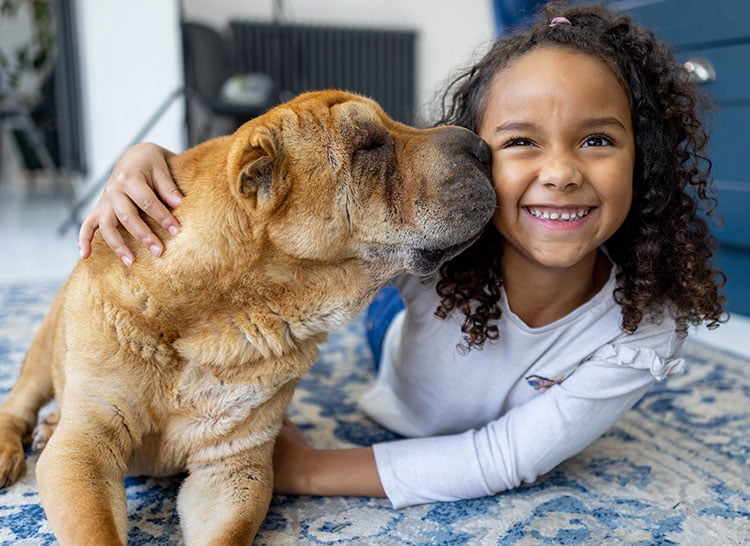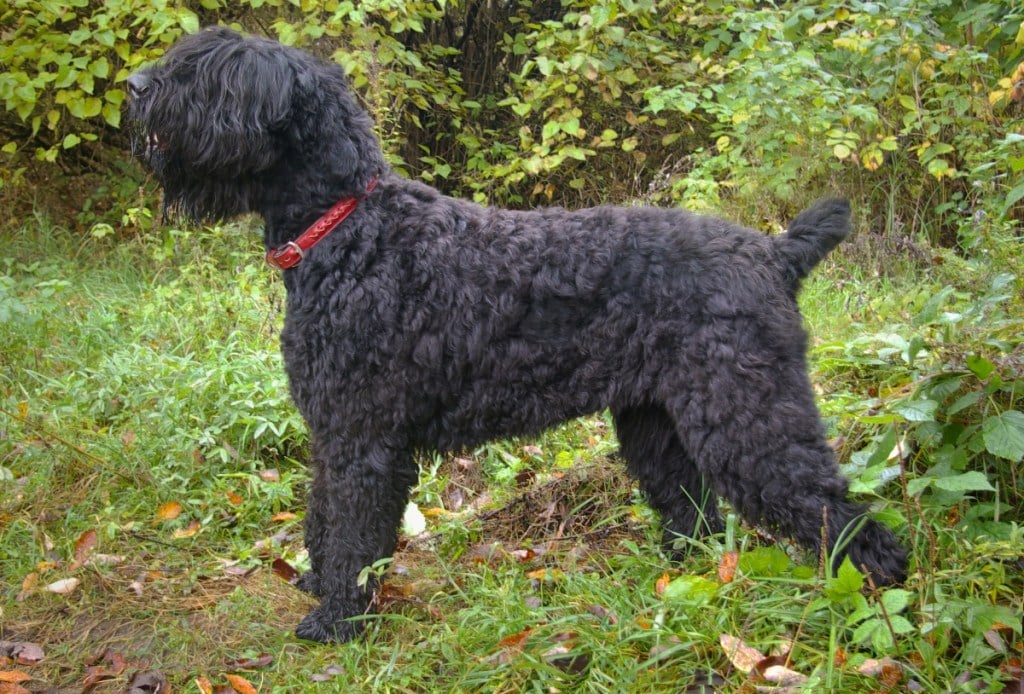Introduction to Shar-Peis
The Chinese shar-pei, also known as just “shar-pei” or “shar pei,” is a calm and independent dog known for its loyalty and wrinkly-faced appearance. These dogs are unique guardian dogs of medium size and have fascinating physical traits. They look so different from other dog breeds, which is one reason why so many people love them!
If you are looking for a serene dog that brings calm and balance to your life, a shar-pei might be the perfect pup for your household. Read on to learn more about the shar-pei breed and how you can take the best care of your shar-pei’s health with training, grooming, diet, exercise, and pet insurance.
Size of Shar-Peis
When fully grown, a shar-pei will weigh between 45 and 60 pounds and stand between 18 and 20 inches tall. These pups continue growing until about the age of 14 to 18 months; however, most of the dogs’ growth occurs during the first year of life.
Here’s how big you can expect your shar-pei to get as the dog grows from puppyhood to adulthood. Female weights are on the low ends of these ranges, and male weights are on the high ends.
| Weight Chart | 3 months | 6 months | 9 months | 12 months | 16 months |
| Female and male shar-peis | 21 to 25 lbs. | 40 to 47 lbs. | 47 to 57 lbs. | 53 to 62 lbs. | 55 to 65 lbs. |
Characteristics of Shar-Peis
Shar-peis are a very recognizable breed of dog because of their many folds, small triangular ears, black tongues, sunken eyes, and broad muzzles. The name shar-pei means “sand skin,” which is a reference to the dog’s bristle-like coat. These dogs also have strong-willed and independent personalities that make them not necessarily the best choice for first-time pet parents. Yet as long as you can handle training to get them to be obedient and socialized, shar-peis are among the most loyal and devoted dog breeds in the world. They can be a bit aloof towards strangers and aggressive towards other dogs, however, if not socialized from early puppyhood.
As you get to know a shar-pei’s personality, here’s what you can expect based on his or her breed characteristics:
| Breed Characteristic | Level (High, Medium, Low) |
| Affectionate with People | Medium |
| Good with Kids | Medium |
| Good with Pets | Low |
| Need for Exercise | Medium |
| Energy Level | Low |
| Intelligence Level | Medium |
| Able to Be Trained | Medium |
| Amount of Barking | High |
| Amount of Shedding | Medium |
History of Shar-Peis
Shar-pei dogs originate from China and have a history that dates back thousands of years. Shar-peis come from China’s southern provinces and the Han Dynasty. Historical records indicate that they were commonly the dogs of peasants. They are versatile canines that worked as hunters, guardians, and herders. When the Communist regime looked down upon dog ownership as the People’s Republic of China was established in 1949, many dogs in the country were slaughtered. However, some shar-peis survived in Hong Kong and Taiwan.
The breed first came to the U.S. in the mid-1960s. A breeder from Hong Kong brought attention to the endangered breed in 1973 and helped to save it from extinction. The American Kennel Club first recognized the breed in 1992 as a non-sporting group dog.
Shar-Pei Standard Information
The general appearance of the shar-pei is medium size, compact, and alert. These are square-profile dogs that are well-proportioned and that have short, harsh coats and loose skin on their head and body.
For more details about this breed, here is an overview of the breed standard information for shar-peis:
Head:
- Large head with profuse wrinkles on the forehead and framing the face
- Dark, small, almond-shaped, and sunken eyes
- Very small, thick, and triangular ears
- Flat and broad skull
- Broad and full muzzle
- Strong teeth that meet in a scissors bite
Neck, Topline, Body:
- Medium-length neck that is full and set into the shoulders
- Topline dips behind the withers slightly
- High-set tail that is thick and round at the base
Forequarters:
- Muscular shoulders that are sloping and well laid back
- Optional to remove dewclaws on front feet
- Moderate feet that are compact and firmly set
Hindquarters:
- Muscular, strong, and moderately angulated hindquarters
- Hind dewclaws must be removed
- Feet the same as in the front
Coat:
- Extremely harsh coat that is straight
- Can be extremely short, up to one inch at the withers
- Breed should be shown in its natural state
Color:
- Only solid colors and sable are acceptable
- Solid color dogs may have shading on the back and ears
Gait:
- Judged at a trot
- Free and balanced gait
- Good forward reach and strong drive in hindquarters
Caring for Shar-Peis
Shar-peis are moderately adaptable dogs that are calm enough to live in apartments. They generally tolerate being alone better than other dog breeds, and they prefer a moderate climate rather than being too hot or too cold. Shar-peis are not naturally friendly towards other dogs, so you will need to provide consistent social reinforcement for your dog to overcome stubbornness. With consistency, they are responsive to training and lovely to be around.
Here are some general tips for taking the best care of a shar-pei:
Best Living Environments:
- Apartments are okay
- No backyard is required but still good for fresh air
- Moderate climates because they are especially sensitive to heat
- Often best as the only pet in the household
Type of Exercise:
- Following family members around the home
- A daily walk on a leash
- Stretching legs and fresh air in a yard
- No running or long-distance hiking
Mental Enrichment:
- Visits to parks and other people’s homes
- Quality time with trusted pet parents
Training Strategies:
- Keep leashed in public due to potential aggression
- Start training as early as possible
- Expose to social situations to minimize fearfulness and overprotectiveness
Grooming Tips:
- Naturally clean breed with minimal odor
- Brush once per week with a grooming mitt
- Bathe about every three months
- Dry folds and wrinkles to prevent infections
- Check ears, trim nails, and brush teeth regularly

Common Health Problems of Shar-Peis
The average life expectancy of a shar-pei is between eight and 12 years. There are some significant health problems that shar-peis are prone to, especially eye disorders, cancers, respiratory issues, cardiovascular disease, skin infections, and musculoskeletal complications. Shar-peis are also prone to kidney failure and mass cell tumors.
These are some of the most common health issues that arise with shar-peis:
- Shar-pei fever (also known as swollen hock syndrome)
- Ear infections
- Seborrhea
- Pyoderma
- Demodectic mange
- Skin allergies
- Cutaneous mucinosis
- Hypothyroidism
- Cancer
- Elbow dysplasia
- Patellar luxation
- Hip dysplasia
- Osteochondrosis dissecans
- Gastric torsion
- Glaucoma
Diet and Nutrition for Shar-Peis
Adult shar-peis need between 1.5 and 2.5 cups of high-quality, dry dog food per day, depending on the caloric density of the diet. This food intake should be divided into two meals. Dogs with some medical conditions may require specific diets for disease management. Consult your vet for specific recommendations for your dog.
Where to Adopt or Purchase Shar-Peis
The Chinese Shar-Pei Club of America provides information and resources about this breed, while the American Kennel Club Marketplace provides a list of 100 percent AKC puppies from AKC-registered litters and breeders who follow the organization’s standards.
There are also rescue organizations that you can work with to find an adoptable shar-pei in need of a loving home. These groups include the Shar-Pei Rescue of Virginia, Pei People Shar-Pei Rescue, and North American Shar-Pei Rescue.
Related Breeds
The shar-pei is undeniably a unique dog breed, but there are other similar breeds that you might be interested in if you like many of the qualities described in this shar-pei dog breed guide. Here are some other types of dogs that may interest you as well:
Pet Insurance for Shar-Peis
Shar-peis are prone to a variety of health conditions that affect these dogs at different ages and stages of life. Therefore, this is a breed that tremendously benefits from pet health insurance. When your shar-pei starts exhibiting unexplained symptoms or has an accident, Healthy Paws is here to help. We offer the #1 customer-rated pet health insurance plan and have enrolled over 560,000 pets with no enrollment fees and flexible premium and deductible options.
With Healthy Paws by your side, you won’t have to worry about the high costs of veterinary bills with your shar-pei needs emergency care, is diagnosed with a breed-specific or hereditary condition, or could benefit from alternative care from a provider you trust.
Tell us just a few basic details about your pet, and we’ll send you an insurance quote so that you can make the best decision for your shar-pei and family. This is an incredible dog breed that deserves every ounce of care and attention that you can provide and receive unconditional love and loyalty in return.











